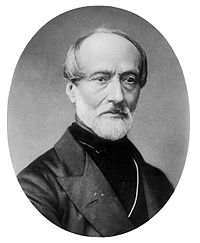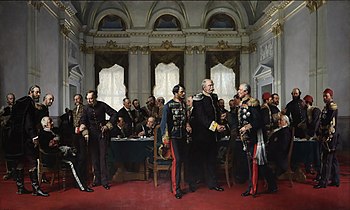The rise of nationalism in europe
- Get link
- X
- Other Apps
Nationalism in Europe: past and present
The rise of nationalism in Europe initiated with the Spring of Nations in 1848.[citation needed] American political science professor Leon Baradat has argued that “nationalism calls on people to identify with the interests of their national group and to support the creation of a state – a nation-state – to support those interests.” Nationalism was the ideological impetus that, in a few decades, transformed Europe. Rule by monarchies and foreign control of territory was replaced by self-determination and newly formed national governments.[1] Some countries, such as Germany and Italy were formed by uniting various regional states with a common "national identity". Others, such as Greece, Serbia, Poland, Romania and Bulgaria, were formed by uprisings against the Ottoman Empire and the Russian Empire.[2The neo-nationalist does not look any more like a skinhead. In the case of Brexit, they more likely resemble the white, middle-class, in their sixties person sitting comfortably in front of the TV who simply says “enough is enough, we want our country back!” after having witnessed wars ravaging countries, refugees fleeing their homes, cities becoming increasingly multicultural, and gays getting legally married. As various studies have demonstrated, the supporter of the kind of populist, nativist, or defensive nationalism embodied by Farage, Trump, or Le Pen is a white man feeling uncomfortable with a changing world. Nostalgia and resentment for a world which no longer reflects what used to be are statistically more powerful explanations than economic predictors. The strongest support for this neo-nationalism does not come from low-waged, unskilled, manual workers (the so called “left-behind”), but from the petty bourgeoisie (e.g., self-employed plumbers, owners of family small businesses, shopkeepers). The populist voters are not those being directly affected by and living in contact with migrants, but those living in predominantly white communities who feel threatened in their privileged socio-economic status by economic decline or immigration
Pre-1848 revolutionsEdit
- 1789, French Revolution,national assembly.
- 1797- Napoleon establishes Sister Republics in Italy
- 1804–15, Serbian Revolution against the Ottoman Empire
- 1814, Norwegian independence attempt against Denmark-Norway and future Sweden & Norway, aftermath of the Napoleonic Wars (including War on independence)
- 1821–29, Greek War of Independence
- against the Ottoman Empire
- 1830, Croatian national revival
- 1830–31, Belgian Revolution
- 1830–31, Revolution in Poland and Lithuania
- 1846, Uprising in Greater Poland
The struggle for independenceEdit

A strong resentment of what came to be regarded as foreign rule began to develop. In Ireland, Italy, Belgium, Greece, Poland, Hungary, and Norway local hostility to alien dynastic authority started to take the form of nationalist agitation.[when?] The first revolt in the Ottoman Empire to acquire a national character was the Serbian Revolution (1804–17),[4] which was the culmination of Serbian renaissance[5] which had begun in Habsburg territory, in Sremski Karlovci.[4] The eight-year Greek War of Independence (1821–29) against Ottoman rule led to an independent Greek state, although with major political influence of the great powers.[6] The Belgian Revolution (1830–31) led to the recognition of independence from the Netherlands in 1839.[7] Over the next two decades nationalism developed a more powerful voice, spurred by nationalist writers championing the cause of self-determination. The Poles attempted twice to overthrow Russian rule in 1831 and 1863. In 1848, revolutions broke out across Europe, sparked by severe famine and economic crisis and mounting popular demand for political change. In Italy, Giuseppe Mazzini used the opportunity to encourage a war mission: "A people destined to achieve great things for the welfare of humanity must one day or other be constituted a nation".

In Hungary, Lajos Kossuth led a national revolt against Habsburg rule; in Transylvania, Avram Iancu led successful revolts in 1846. The 1848 crisis had given nationalism its first full public airing, and in the thirty years that followed no fewer than seven new national states were created in Europe. This was partly the result of the recognition by conservative forces that the old order could not continue in its existing form. Conservative reformers such as Cavour and Bismarck made common cause with liberal political modernizers to create a consensus for the creation of conservative nation-states in Italy and Germany. In the Habsburg Monarchy a compromise was reached with Hungarians in 1867 which led to the establishment of the Dual Monarchy. Native history and culture were rediscovered and appropriated for the national struggle. Following a conflict between Russia and Turkey, the Great Powers met at Berlin in 1878 and granted independence to Romania, Serbia and Montenegro and limited autonomy to Bulgaria.
National awakening also grew out of an intellectual reaction to the Enlightenment that emphasized national identity and developed an authentic view of cultural self-expression through nationhood. The key exponent of the modern idea of the nation-state was the German G. W. Friedrich Hegel. The French Revolution, although primarily a republican revolution, initiated a movement toward the modern nation-state and also played a key role in the birth of nationalism across Europe where radical intellectuals were influenced by Napoleon and the Napoleonic Code, an instrument for the political transformation of Europe. "Its twin ideological goals, nationalism and democracy, were given substance and form during the tumultuous events beginning at the end of the eighteenth century."[3] Revolutionary armies carried the slogan of "liberty, equality to brotherhood" and ideas of liberalism and national self-determinism. He argued that a sense of nationality was the cement that held modern societies together in the age when dynastic and religious allegiance was in decline. In 1815, at the end of the Napoleonic wars, the major powers of Europe met at the Congress of Vienna and tried to restore the old dynastic system as far as possible, ignoring the principle of nationality in favour of "legitimism", the assertion of traditional claims to royal authority. With most of Europe's peoples still loyal to their local province or city, nationalism was confined to small groups of intellectuals and political radicals. Furthermore, political repression, symbolized by the Carlsbad Decrees published in Austria in 1819, pushed nationalist agitation underground.
Pre-1848 revolutionsEdit
- 1789, French Revolution,national assembly.
- 1797- Napoleon establishes Sister Republics in Italy
- 1804–15, Serbian Revolution against the Ottoman Empire
- 1814, Norwegian independence attempt against Denmark-Norway and future Sweden & Norway, aftermath of the Napoleonic Wars (including War on independence)
- 1821–29, Greek War of Independence
- against the Ottoman Empire
- 1830, Croatian national revival
- 1830–31, Belgian Revolution
- 1830–31, Revolution in Poland and Lithuania
- 1846, Uprising in Greater Poland
The struggle for independenceEdit

A strong resentment of what came to be regarded as foreign rule began to develop. In Ireland, Italy, Belgium, Greece, Poland, Hungary, and Norway local hostility to alien dynastic authority started to take the form of nationalist agitation.[when?] The first revolt in the Ottoman Empire to acquire a national character was the Serbian Revolution (1804–17),[4] which was the culmination of Serbian renaissance[5] which had begun in Habsburg territory, in Sremski Karlovci.[4] The eight-year Greek War of Independence (1821–29) against Ottoman rule led to an independent Greek state, although with major political influence of the great powers.[6] The Belgian Revolution (1830–31) led to the recognition of independence from the Netherlands in 1839.[7] Over the next two decades nationalism developed a more powerful voice, spurred by nationalist writers championing the cause of self-determination. The Poles attempted twice to overthrow Russian rule in 1831 and 1863. In 1848, revolutions broke out across Europe, sparked by severe famine and economic crisis and mounting popular demand for political change. In Italy, Giuseppe Mazzini used the opportunity to encourage a war mission: "A people destined to achieve great things for the welfare of humanity must one day or other be constituted a nation".

In Hungary, Lajos Kossuth led a national revolt against Habsburg rule; in Transylvania, Avram Iancu led successful revolts in 1846. The 1848 crisis had given nationalism its first full public airing, and in the thirty years that followed no fewer than seven new national states were created in Europe. This was partly the result of the recognition by conservative forces that the old order could not continue in its existing form. Conservative reformers such as Cavour and Bismarck made common cause with liberal political modernizers to create a consensus for the creation of conservative nation-states in Italy and Germany. In the Habsburg Monarchy a compromise was reached with Hungarians in 1867 which led to the establishment of the Dual Monarchy. Native history and culture were rediscovered and appropriated for the national struggle. Following a conflict between Russia and Turkey, the Great Powers met at Berlin in 1878 and granted independence to Romania, Serbia and Montenegro and limited autonomy to Bulgaria.
- Get link
- X
- Other Apps


Comments
Post a Comment